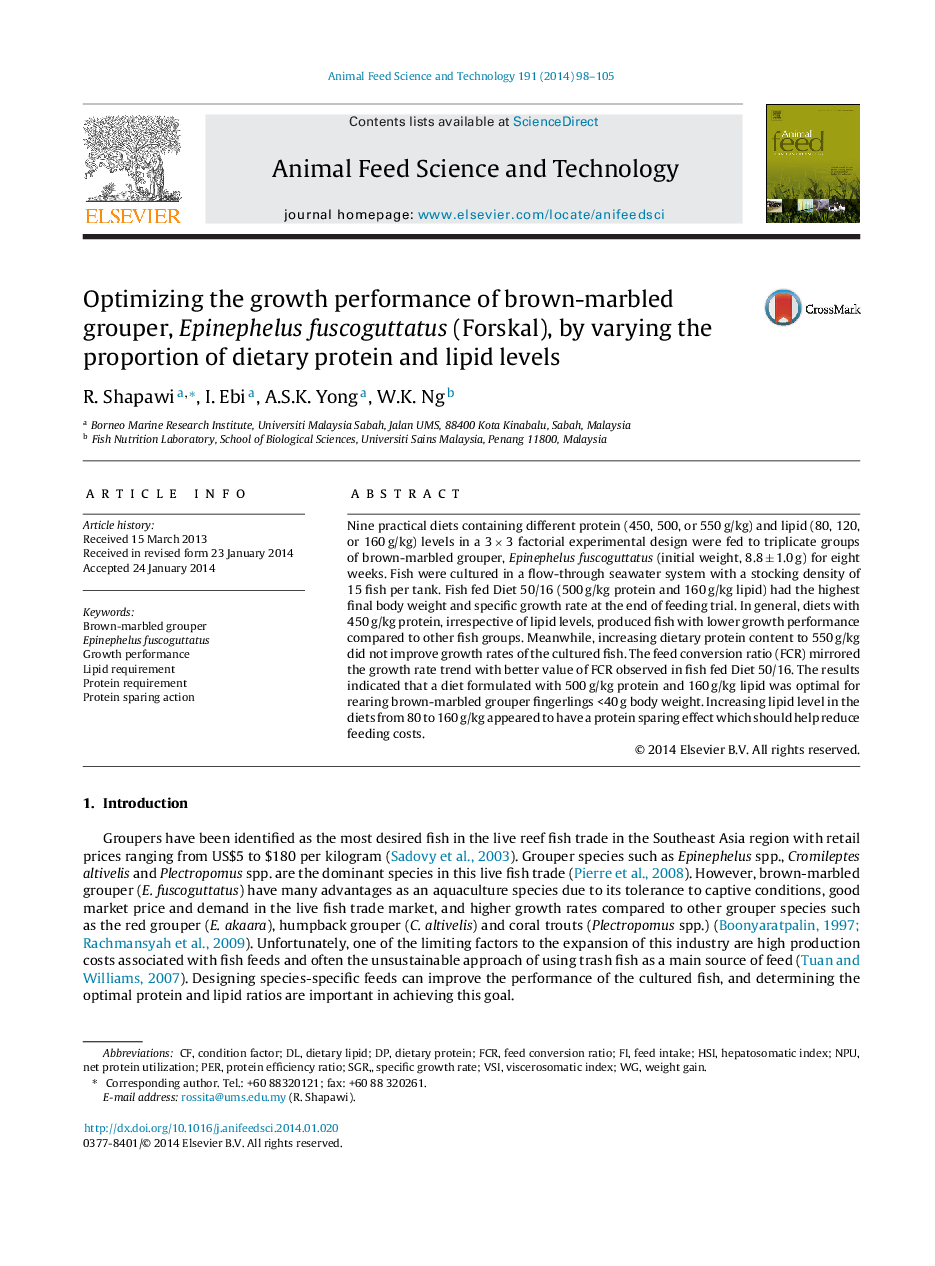| Article ID | Journal | Published Year | Pages | File Type |
|---|---|---|---|---|
| 2419607 | Animal Feed Science and Technology | 2014 | 8 Pages |
Nine practical diets containing different protein (450, 500, or 550 g/kg) and lipid (80, 120, or 160 g/kg) levels in a 3 × 3 factorial experimental design were fed to triplicate groups of brown-marbled grouper, Epinephelus fuscoguttatus (initial weight, 8.8 ± 1.0 g) for eight weeks. Fish were cultured in a flow-through seawater system with a stocking density of 15 fish per tank. Fish fed Diet 50/16 (500 g/kg protein and 160 g/kg lipid) had the highest final body weight and specific growth rate at the end of feeding trial. In general, diets with 450 g/kg protein, irrespective of lipid levels, produced fish with lower growth performance compared to other fish groups. Meanwhile, increasing dietary protein content to 550 g/kg did not improve growth rates of the cultured fish. The feed conversion ratio (FCR) mirrored the growth rate trend with better value of FCR observed in fish fed Diet 50/16. The results indicated that a diet formulated with 500 g/kg protein and 160 g/kg lipid was optimal for rearing brown-marbled grouper fingerlings <40 g body weight. Increasing lipid level in the diets from 80 to 160 g/kg appeared to have a protein sparing effect which should help reduce feeding costs.
